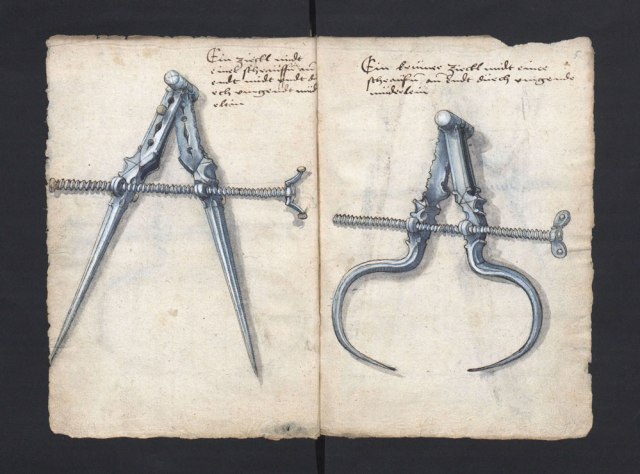Welding Quality Assurance & Quality Control Processes – Red-D-Arc Red-D-Arc
Welding Quality Assurance & Quality Control Processes
Contents
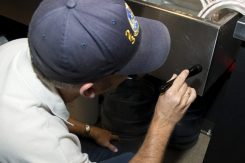
Quality Assurance
Quality Assurance (QA) is a set of defined processes for systematic monitoring and evaluation to assure product quality.
Quality Control
Quality Control (QC) is the process of confirming that the product meets the specifications. It includes the checking and testing of manufacturing procedures as well as the final products. The results from these tests are compared with a set of defined acceptance criteria. By carrying out QC testing during manufacturing, defects can be identified in a timely manner, allowing for the product flaw to be rectified and if required, adjustments to be made in the manufacturing process to prevent further defective output.
In welding, QA/QC plays a vital role in ensuring sound and reliable welds are produced and in minimizing rework.
Why are QA/QC Processes Needed?
QA/QC plays a vital role in ensuring sound and reliable welds are produced and in minimizing rework.
Supply contracts for fabrications may specify compliance to certain welding standards, which in turn may stipulate following defined QA and QC processes. In some cases, the customer specifies a more stringent QA/QC regime than the actual standard.
In certain disciplines, it is a regulatory requirement to comply with certain welding standards, which makes the use of specific QA/QC processes mandatory. These disciplines include pressure vessels, structural steel work and lifting equipment.
QA/QC is also a good way to show that due diligence was practised during the fabrication process. It also captures the state of the product during and at the end completion. This information may be used in future to counter claims of defective products.
What can happen if QA & QC Procedures are Not Followed?
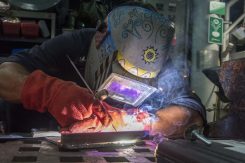
Not carrying out adequate QA/QC during the fabrication can result in welds of varying quality. When weld defects surface, rectification will be required and may delay the delivery of the product to the customer. This may also result in a loss of reputation for the fabricator. If the contractual agreement with the customer mandates compliance to standards and the applicable QA/QC requirements were not followed, it can lead to contractual issues and legal penalties. This scenario is more likely if there are quality issues identified after completion of fabrication leading to delays and even worse, failure of the product during use.
QA/QC Documents
“The QAP defines the timing of the checks and test which need to be carried out”
A Quality Assurance Plan (QAP) is developed and forms the framework for the QA/QC activities before and during the fabrication process. The QAP defines the timing of the checks and tests which need to be carried out. It defines the key personnel roles and assigns responsibilities to the various roles. The weld details, class and compliance standards are defined by the Design Engineer taking into account the application and customer requirements. This will determine the QC requirements for the project. From the above, a Welding Engineer typically would create welding documentation for fabricating the product. These documents commonly are Welding Procedure Specification (WPS) and Weld Maps and form the basis for the welding QA/QC.
WPS is instructions on how to carry out the specific welds. If typically specifies the welding standard, welding process, type of weld, weld preparation, pre and post-heat requirements, weld position/s, interpass temperatures, electrode/filler specification, gas details, range of amps/voltages, speeds, current type, polarity etc.
Weld maps – shows the location of welds and assign the appropriate Welding Procedure Specification (WPS) to each weld.
Qualification of WPS and Welders
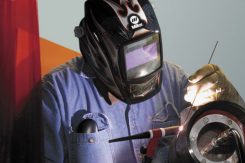
Following the compilation of the WPS, the WPS itself and the welder need to be qualified.
Welder Qualification
Welder Qualification needs to be performed to confirm the welder’s ability to deposit sound weld metal for a specific type of weld, material and weld position.
WPS Qualification
WPS qualification serves the purpose of determining whether the welds are capable of providing the required characteristics for its application.
The extent of testing required to qualify the WPS will depend on whether pre-qualified weld preparations and consumables are used. In some instances (e.g. where standard pre-qualified welds are used), minimal or no testing may be required. Where WPS qualification is required, weld test pieces (also called weld coupons) are fabricated according to the WPS and the compliance standard. Non Destructive Testing (NDT) and Destructive Testing (DT) is then carried out on the test pieces to check for weld defects and the properties of the joint. A Procedure Qualification Record (PQR) or Welding Procedure Qualification Record (WPQR) is used to document the weld qualification.
The Welder Qualification needs to be performed to confirm the welder’s ability to deposit sound weld metal for a specific type of weld, material and weld position. The Welder Qualification is valid for a range of materials, thicknesses, positions and types of welds, depending on the qualification standard. It is documented on the Welder Qualification Test Certificate and Welder Performance Qualification.
Inspection and Test Procedure (ITP), check and test sheets – These documents are created based on the WPS and design documentation. They are completed as the QC checks/tests are carried out for recording purposes.
QC Prior to Welding
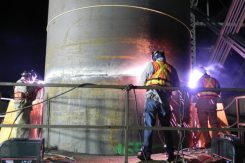
QC prior to actual welding typically includes the following:
- Confirmation of material to ensure chemical composition and mechanical properties are compliant with the design specification – generally done through the sighting of material certificates. In certain circumstances, some testing may also be required e.g. on thick plates UT to rule out laminar tearing during/after welding.
- Joint preparation to ensure the preparation is compliant with the design specification and/or specified welding standard. This includes dimensional and cleanliness checks.
- Joint fitment checks – root opening, tacking and backing material (etc.) are according to the WPS and the compliance standards.
- Welder Qualification – check that the welder is qualified to carry out the weld.
QC During Welding
- Check preheat and interpass temperatures are within limits specified in the WPS
- Confirm filler material is as specified in the WPS
- Other checks: cleaning between passes, weld run appearance, back gouging where specified
- Confirm that the WPS is being followed
- Non-destructive testing as specified
QC After Welding
The scale of QC will depend on the welding compliance standard, class of weld and the agreement with the customer. The testing can be DT or NDT.
Destructive Testing (DT)
“NDT is only carried out on the finished fabrication”
As the name suggests, DT requires the physical destruction of the part or weld to test the weld. It generally encompasses the sectioning of the part and/or breaking of the weld. Generally, NDT is only carried out on the finished fabrication, but DT on one or a percentage number of sample parts may be required. DT is more commonly used for the WPS and Welder qualifications. The common DT processes are as follows:
Macro testing – The sections are polished, etched and examined under a microscope for defects.
Break test – The fillet weld sample is broken and the broken surfaces examined for discontinuities.
Tension test – Tensile test is carried out on the welded specimen.
Bend test – The specimen is bent to a specified bend radius to evaluate the ductility and soundness of the weld.
Non-Destructive Testing (NDT)
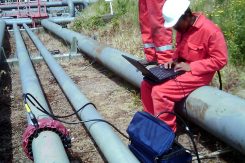
NDT involves the testing of welds without destroying the welds or parts. The following are the common NDT techniques:
- Visual Scanning – visual check to confirm that the welds are as per the drawings i.e. type of welds, locations.
- Visual Examination – visual inspection of the weld to check for visible weld defects according to the welding compliance standard.
- Dye Penetrant Testing (PT) – Dye to detect surface defects in the weld.
- Magnetic Particle Testing (MT) – Magnetism to detect surface or close to surface defects in the weld.
- Ultrasonic Testing (UT) – Ultrasonic waves to detect internal weld defects.
- Radiographic Testing (RT) – X-ray to detect flaws in the weld.
Red-D-Arc has a wide selection of welding and ancillary equipment for rental and sale from market-leading manufacturers covering the following:
-
A diverse range of welders covering:
- SMAW (stick), GMAW (MIG), GTAW (TIG). Keyhole TIG and SAW processes
- Diesel, Gas and LPG engine welders
- Optimized welding units for Aluminum
- Multi-operator welding stations
- Welders optimized for pipe welding
-
Ancillary equipment including:
- Generators
- Induction heating systems
- Blast cleaning equipment
- Plasma cutters
- Welding fume extractors
- Air carbon arc gouging
- Oxy fuel cutting
- Mobile air compressors
- Supports
- Electrode and flux holding ovens
- Gas cylinder cages
-
Automation equipment including:
- Automatic wire feeders
- Positioners
- Manipulators
- Turning rolls
- Robotic welding
Have a look at our complete range of products.




